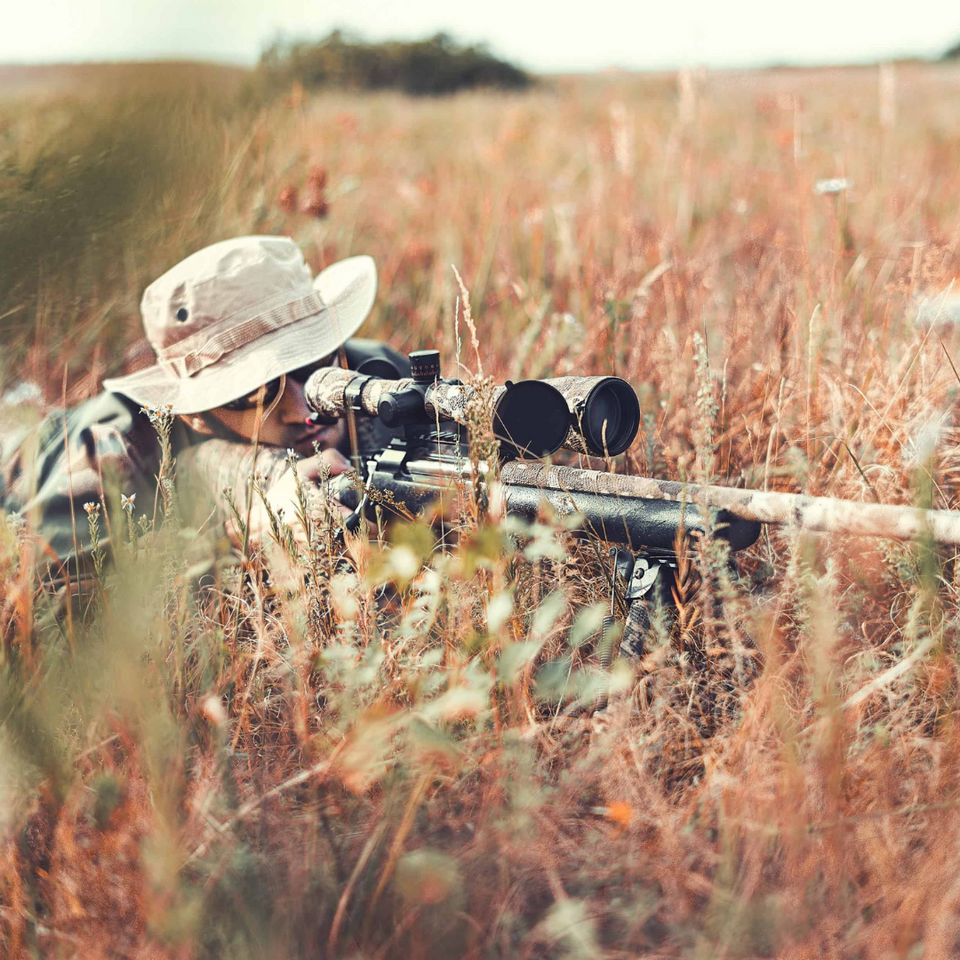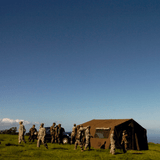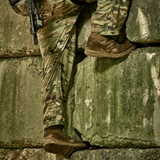History Of Camo - Get to Know Military Uniforms
When it comes to combat uniforms, the U.S. Military has strict protocols to follow that are based on functionality, research, and a long history of colors! The traditional camo we think of when studying military uniforms comes in many variations and has shifted over the years.
The military is known for its rich history, especially when it comes to uniforms and attire. The classic camo pattern we all recognize has varied from branch to branch for decades. In this article, we will explore the history of camo and how you can use these learnings when purchasing your own military-grade equipment.
If you are interested in learning a little bit more about the unique history behind military uniforms and the apparel worn by our men and women on the front lines, keep reading.
Original OD
From the year 1952 until 1989, all members of the United States armed forces could be seen wearing OG 107 uniforms. Prior to this, World War II soldiers were dressed in a mustard brown uniform of a similar make. These uniforms are made to be utility style, in a specific shade of olive green, either color name 107 or 507. The OG 107 uniforms are the original make, created with a thick cotton material. Typically, soldiers would wear the shirt of the uniform tucked in and belted with a black fabric belt.
As these uniforms are long sleeved by nature, soldiers would be allowed to roll up the sleeves or unbutton a flap if serving in a hot climate or wear a poncho in the rain. The trousers associated with this outfit are meant to be tucked into boot tops and include two patch pockets on the back of the pants. The reason for changing from OG 107 to the OG 507 material, is that the OG 507 uniform is made of a polyester cotton blend. This material stays dark green longer and has a better ability to hold color as soldiers face various battle elements.
Traditional Leaf Patterns, or ERDL
The traditional leaf pattern you are likely used to seeing on military uniforms is a camouflage pattern that has been in use since 1967. The design for the print was made several years before, developed by the United States Army and its engineer and Research Development Laboratories, which is also known as ERDL. The original uniform was designed in 1948, and it was launched for Special Operations units in the late 60s.
This pattern was originally made to resemble greenery and foliage, with leaf and branch patterns woven throughout the design. Depending on where the soldier is based, they may be given a lowland or highland ERDL pattern. Lowland ERDL patterns were introduced for soldiers who needed to camouflage and blend in with their dark surroundings, oftentimes in the forest. Highland ERDL patterns have a dominantly light green undertone, to represent lush forests and bright greenery.
BDU Woodland Attire
BDU stands for battle dress uniform, which is recognized as one of the most commonly used military patterns. This design was originally adopted in 1981 and is made to represent street clothing that is functional yet camouflaged. Battle dress uniforms are typically worn on top of a light brown T-shirt and cinched at the waist with a black fabric web belt. Camouflage field jackets M65s are also used if a soldier is deployed in a cold climate. For further protection, matching caps are worn to protect soldiers from sunlight exposure.
The BDU outfit typically includes
- One cap
- One brown shirt
- BDU trousers
- BDU Field Jackets
The BDU pattern can come in multiple variations. The three most common variations are desert, woodland camo, and color desert. The woodland BDU pattern is most popular, as it is worn to blend in with forest surroundings that contain an abundance of tree life.
6 & 3 Color Desert
The six-color desert pattern is one of the most popular versions of camouflage to exist. This pattern was developed during desert exercises and in the era of the infamous Persian Gulf War.
The six-color desert pattern contains:
- Light tan
- Sand
- Olive Green
- Brown
- Black
- White
The black-on-white spots give this pattern the nickname of “chocolate chip” pattern camo.
The three-color desert pattern was made to clothe the large influx of US Army members in the early 90s and provide a more contemporary pattern that was faster to print. This pattern is meant to provide an enhanced camouflage look and serves as a replacement for the previous five-color desert pattern.
In the new and improved 3-color desert pattern you will find the following shades:
- Tan 492
- Brown 493
- Kahki 494
Marines would previously switch between tan and brown desert pattern uniforms and green woodland designs in the wintertime. At this point in time, all serving Marines use the woodland pattern as standard practice during all seasons.
Digi
Digi camouflage is a newer addition to the world of camo prints, as it is made digitally, hence the design name. This type of camo was designed by combining two or more color scales with a digital camo pattern made on the computer. The digi pattern was designed primarily to combate satellite imagery so they could not clearly see the number or troops. This proved not to be important in more recent conflicts with less technical combatives.
Digi camo can be used in a variety of situations, from woodland to urban, and everything in between. While it is easy to make, this pattern has proven to be only moderately effective when trying to blend into one's surroundings.
ACU
BDU uniforms have been replaced by ACU, with the former pattern being officially discontinued in April 2008. The primary reason for the change is the makeup of the jacket. BDU pants have six different pockets, while ACU has four.
The acronym ACU stands for Army Combat Uniform and was introduced in 2004. This pattern was inspired by the Marine's digital pattern uniforms and was designed to also help hide troop activities and numbers from satellite images by pixelating the pattern. All-terrain camo is the color associated with ACU since this is the first camp to be used in the most recent version of the U.S. army combat uniform!
As for the Air Force, this sector has always worn camo for its ground security forces and special units. They have similarly matched the ACU pattern in an ABU tiger stripe, later replacing this pattern with Multicam, which we will explore next.
Multicam
Multicam and OCP uniforms are oftentimes confused, but they both serve different purposes. Multicam uniforms have a near-vertical pattern, almost like a puzzle. These camo shapes are known as twiglets.
OCP uniforms have linear horizontal patterns and no twiglets or “puzzle pieces”. As of today, all Amy, Air Force, and Space Force members wear OCP uniforms when serving. Coyote brown, or Tan 499, is the color of undergarments that typically go underneath uniforms. These garments can be t-shirts, boots, belts, hats, and more.
USN
The United States Navy recently adopted its own version of this uniform, to replace the standard all-blue outfits in July 2010. The new uniforms are more comfortable and more fire-resistant but heavy and warm to wear. They even have their own Dig print, which contains shades of blue in the same familiar puzzle-like shapes nicknamed “blueberries”. In 2019 the USN changed again from the Blueberry uniforms to the USN type III matching a more multicam color in digital format to be lighter and constructed of 50% nylon and 50% cotton twill fabric for a breathable, comfortable feel.
USAF ABU
As for the Air Force, ABU camo was formerly worn when serving. This pattern is a combination of tan, grey, sage, and slate blue coloring, and is known as Digital Tiger Stripe, for its tan and grey coloring. As of 2018, the Air Force transitioned from the ABU, or Airman Battle Uniform, to the OCP uniform, which is now worn today. As for the Air Force, this sector has always worn camo for its ground security forces and special units. Ready, set, take off!
Conclusion
We hope this article helped you learn just a little bit more about the rich history of camo and how it has evolved over the years when it comes to military uniforms. If you are looking to make your next military-grade purchase, look no further than Army Navy Outdoors and shop our online store today.







